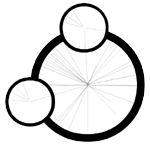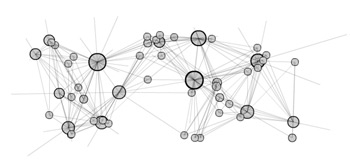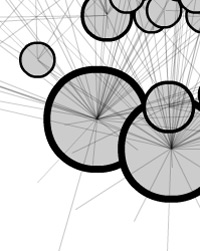
This randomly connected binary network is the first in a series of experiments with self-organization. At progressive intervals, binary nodes (switches which have only two states, lit or unlit) are created and connected to each other at random. |
||||
 figure a. typical network of switching nodes. |
||||
Nodes are coupled to each other in such a way that the activity of each node is governed by the prior activity of those nodes connected to it. The 'switching rule' that determines the state of the node is simple: an odd number of adjacently lit nodes switches the node 'on', while an even number switches the node 'off'.
|
||||
|
||||
Further iterations on this self-organizing system produce some
astonishing results. See versions two,
three, four,
five, and six. |
||||
| jtarbell August 5, 2001 |



